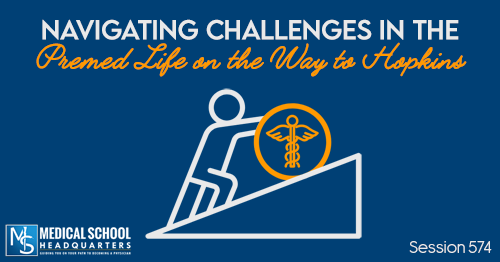You may have a list of activities in your head that you think are all required of you. The pressure of completing this imagined list in addition to keeping your grades up can be overwhelming. As always, I want to dispel the idea that you have to be perfect and the idea that there’s any single set of things you have to do to be a perfect or successful premed. You should prioritize what you are passionate about and be realistic about how much you can put on your plate before your success begins to suffer.
While keeping your interests in mind, there are some things you should prioritize to set yourself up for success. One of those is prioritizing learning how to be a good student and keeping your grades. The other thing to prioritize is getting exposure to the medical field to ensure that this is the right path for you. The two main ways students get this exposure are through shadowing and clinical experience, also sometimes called direct patient care. Below, you’ll learn about the difference and what purpose each serves.
What Is Shadowing?
Physician shadowing is when a doctor allows you to follow them throughout their day as they see patients and do all of the “behind the scenes” work of medicine like documentation or working with medical students and residents. The physician will introduce you and confirm whether the patient is willing to have you observe the visit. Other than that, shadowing generally does not involve patient interaction.
Why Shadowing?
Shadowing is the best way to learn what the practical day-to-day life of a physician is like. Even if you work with physicians in a clinic or hospital, you only see a portion of all involved in being a physician. Shadowing and clinical experiences can also re-motivate you to continue to follow the premed path when stress settles in.
If you’re struggling to find shadowing, or just want to add to what you’re already doing, sign up for eShadowing!
What is Clinical Experience?
Clinical experience refers to interactions with patients where you are involved in their care. It is about what you are doing more than where you are doing it. Registering patients at the front desk of a clinic is not a patient care experience, but home health likely is. Some students also use volunteering or “volunteer hours” as a stand-in for clinical experience, which can add to the confusion. Clinical experience can be paid or unpaid, and which type is not as crucial as getting the experience.
Seeking a job involving patient care can be an excellent option for nontraditional students or students who don’t have time to volunteer because they spend that time working. The types of jobs available to students vary depending on the state. Often, job postings open to unlicensed medical assistants or patient care technicians will train you on the job and can be a great way to get your foot in the clinical door. 
Why Clinical Experience?
While shadowing can help you understand what it’s like to be a physician, it’s very passive. You need clinical experience to learn whether you enjoy being around patients. Spending time with and caring for patients over months or years will show you the good, bad, and messy parts of medicine. Your clinical experiences will allow you to prove to yourself and admissions committees whether working in medicine is right for you.
Learn more about clinical experience in Premed 101: Guide to Clinical Experience.








